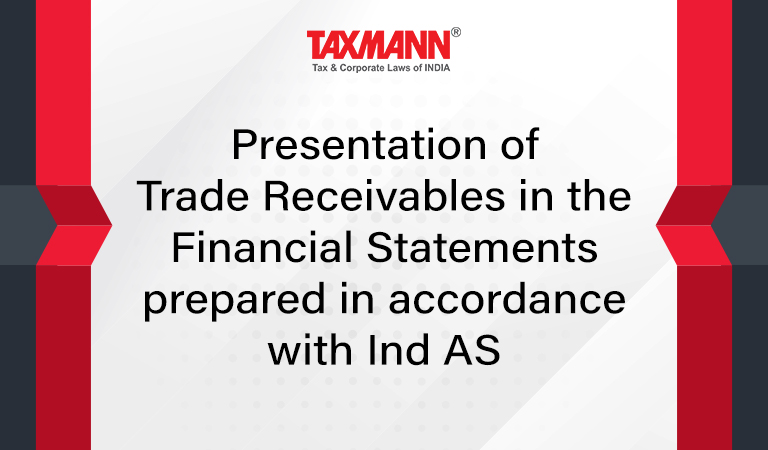Presentation of Trade Receivables in the Financial Statements prepared in accordance with Ind AS
- Blog|News|Account & Audit|
- < 1 minute
- By Taxmann
- |
- Last Updated on 15 February, 2022

Ind AS Schedule III sets out the minimum requirements for disclosure on the face of the Financial Statements. For presenting trade receivables that appear under the head “Non- current assets” and “Current assets” as a separate line item, the guidelines provided by Schedule III need to be followed.
Trade Receivables is an amount that is due on account of goods sold or services rendered in the normal course of business and the company has an unconditional right on such amount of consideration.
Hence, amounts due under contractual rights, other than arising out of the sale of goods or rendering of services, cannot be considered as Trade Receivables.
A trade receivable will be treated as current if it is likely to be realized within twelve months from the date of the Balance Sheet or within the operating cycle of the business. For trade receivables outstanding, the ageing schedule as prescribed in Schedule III shall be given.
Ind AS Schedule III requires separate disclosure of the ageing schedule of “Trade Receivables outstanding” for both viz, the non-current and the current portion of trade receivables.
To Read The Full Story Click Here
Disclaimer: The content/information published on the website is only for general information of the user and shall not be construed as legal advice. While the Taxmann has exercised reasonable efforts to ensure the veracity of information/content published, Taxmann shall be under no liability in any manner whatsoever for incorrect information, if any.

Taxmann Publications has a dedicated in-house Research & Editorial Team. This team consists of a team of Chartered Accountants, Company Secretaries, and Lawyers. This team works under the guidance and supervision of editor-in-chief Mr Rakesh Bhargava.
The Research and Editorial Team is responsible for developing reliable and accurate content for the readers. The team follows the six-sigma approach to achieve the benchmark of zero error in its publications and research platforms. The team ensures that the following publication guidelines are thoroughly followed while developing the content:
- The statutory material is obtained only from the authorized and reliable sources
- All the latest developments in the judicial and legislative fields are covered
- Prepare the analytical write-ups on current, controversial, and important issues to help the readers to understand the concept and its implications
- Every content published by Taxmann is complete, accurate and lucid
- All evidence-based statements are supported with proper reference to Section, Circular No., Notification No. or citations
- The golden rules of grammar, style and consistency are thoroughly followed
- Font and size that’s easy to read and remain consistent across all imprint and digital publications are applied



 CA | CS | CMA
CA | CS | CMA
